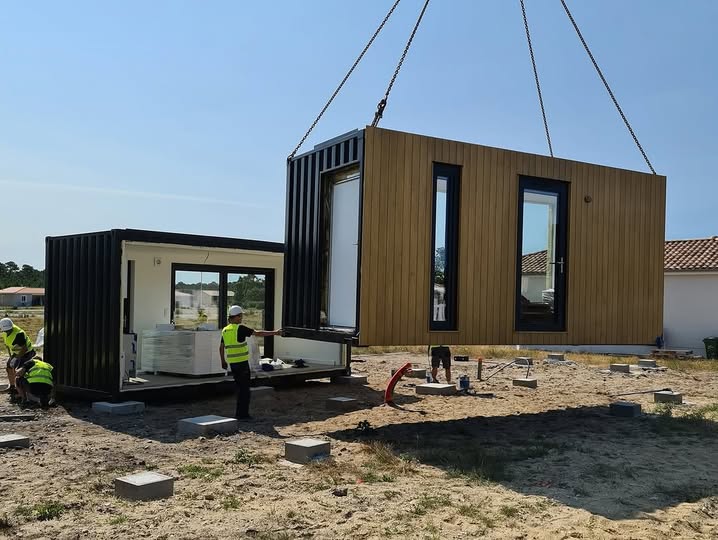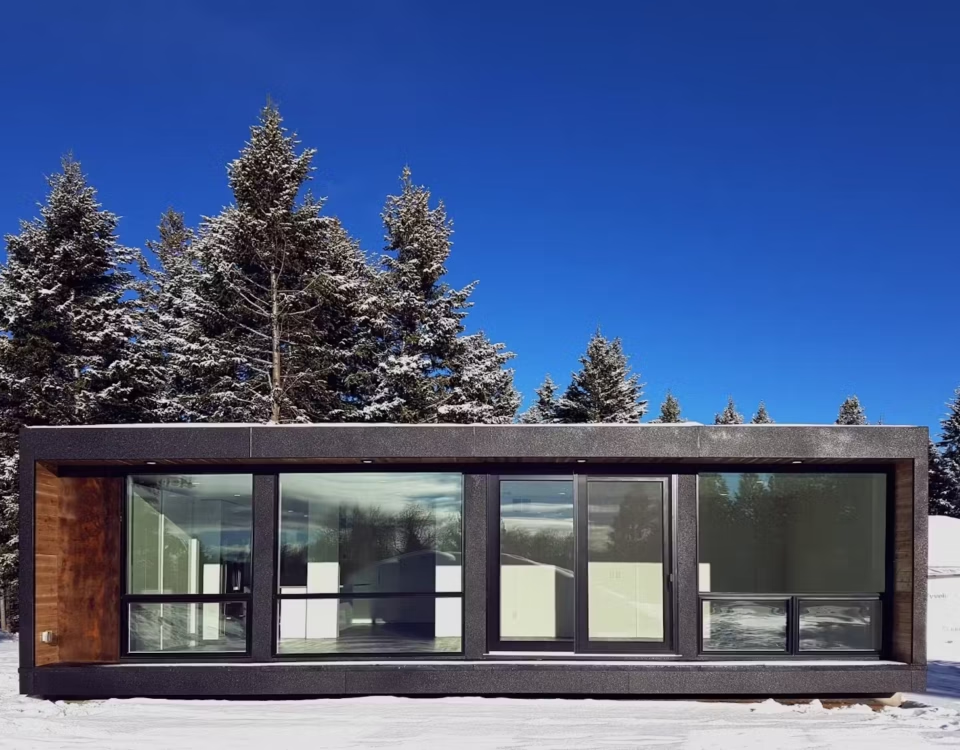Shipping Container Homes
Who Builds Shipping Container Houses Near Me?
8 September 2025Shipping Container Homes – Pros and Cons
23 September 2025Shipping Container Homes
Container homes typically cost half as much to construct compared to traditional stick built houses, yet this does not translate to actual savings in money per square foot.
Shipping containers are designed and constructed to protect cargo being transported over land, sea or rail transport routes, while withstanding harsh weather conditions.
Efficient Use of Space
As more people choose tiny houses for living space, an increase in shipping container homes has occurred. These unique properties consist of recycled steel shipping containers transformed into functional living spaces; typically cheaper and easier than conventional house builds, shipping container homes have become popular choices among those pursuing minimalist living styles. Shipping Container Homes
However, living in a shipping container home does have its downsides. These structures can be somewhat space-restrictive as they typically only come in 20-foot and 40-foot lengths that may not meet all family needs.
Another disadvantage of steel structures is that they can be difficult to insulate, leading to higher heating and cooling bills that make them less energy efficient than traditional homes. Furthermore, steel buildings may be susceptible to condensation and corrosion if their insulation is improperly sealed off – compromising resale value as well. Luckily, these issues can be mitigated through smart design techniques; by creating outdoor living areas connected to the inside of their house for example – residents can maximize space while reducing energy usage.

Customizable
Shipping container homes offer great customization capabilities, making them an excellent choice for people who prioritize sustainability and design. From minimalist tiny homes and cabins to expansive multi-container family residences, shipping container homes can easily adapt to meet your personal taste and match any environment.
Add a personal touch to your shipping container home’s exterior by customizing its look with paint, cladding or murals. This will not only make it look more appealing and match its surroundings better; but can also help separate it from others while reflecting your individuality and reflecting who you are as an individual.
Shipping container homes offer another advantage: their construction typically occurs much more rapidly than traditional homes due to being built on a smaller scale and with containers already providing structural integrity. This quick construction can be invaluable for those in housing shortages areas as it saves both materials and labor costs significantly.
Energy Efficient
Rising numbers of people are searching for more eco-friendly and sustainable housing options, including shipping container homes. Shipping container homes offer several advantages over traditional home building techniques, including reduced energy costs and carbon emissions, construction from eco-friendly materials like recycled steel shipping containers and integration of renewable energy sources like solar panels – these features can significantly lower energy consumption while making life more comfortable for residents.
Shipping containers make a fantastic building material as they are composed of recycled materials and can easily be moved between locations. Furthermore, they can serve as temporary shelters in disaster zones; construction is straightforward and economical while they can even be customized to suit individual requirements.
Container houses’ energy efficiency can vary depending on how they’re organized and their surrounding climate conditions, which is especially relevant in Europe where weather patterns vary greatly. By analyzing correlations between cooling degree days and solar irradiance levels, this study provides a method for comparing their efficiency across climate zones.
Affordable
Shipping container homes have become an increasingly popular alternative to traditional home construction, offering an economical yet stylish alternative. They can be customized to meet specific needs while fostering a more minimal lifestyle favored by many homeowners. Shipping Container Homes
Many consider shipping container homes environmentally-friendly because they’re constructed using recycled containers that conserve metal resources. Furthermore, these homes can often be assembled faster than conventional wood or concrete homes thanks to their modular design and international transport network for moving containers.
However, it’s essential to keep in mind that the environmental impact of shipping container homes depends on their design and construction methods. For instance, using spray foam insulation or non-breathable underlay and flooring could produce harmful fumes that damage the environment. Therefore, before embarking on any construction projects with shipping container homes it’s crucial that thorough research be performed into local building codes and zoning regulations in your area, as well as hiring experienced contractors familiar with building this type of home.
Sustainable
Shipping containers offer an eco-friendly alternative for building homes, offices, and other commercial facilities. Constructed of recycled materials that can be reused multiple times over their lifespan. Plus, their lower costs make them more cost effective than traditional building materials – not to mention they’re easy to transport and can be assembled quickly!
Sustainable container homes employ various strategies to reduce their environmental footprint, including smart home technology, energy-efficient appliances and sustainable gardens. Low VOC paints and bamboo flooring may help improve indoor air quality; while solar panels may further help minimize energy usage.
Building a sustainable shipping container home depends on your goals, budget, and regulatory flexibility. States with few regulations and affordable land, like Tennessee or North Carolina are great places for this type of home; you could also opt for rural areas with lax regulations as potential building locations.
Florida is another ideal state for building sustainable shipping container homes, offering mild temperatures and an interest in alternative housing solutions. Furthermore, several counties within its borders welcome such methods of construction.


